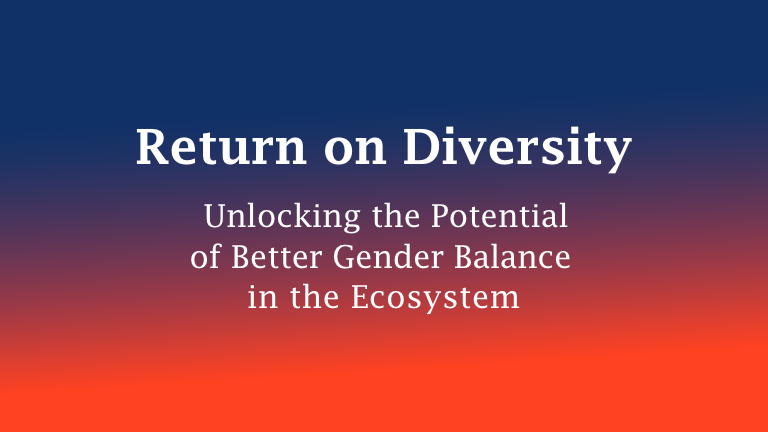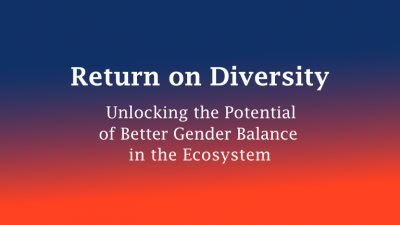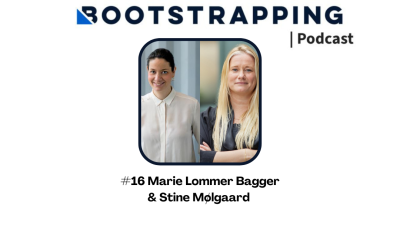
Return on Diversity #6 – Calling All Startups: Unlock Your Full Market Potential Through Diversity
Product development and market understanding is fundamental for startups. Having an accurate understanding of both the problem, the market, and seeing the full potential of your solution is key. Lack of diversity, is a potential barrier for all of these – leading to biased and problematic design or risk of missing out on market potential.
This is no. #6 article in a series about the lack of gender balance within the Danish startup eco system, Bootstrapping are publishing from our guide Return on Diversity. The guide is a collaboration between Bootstrapping, Female Founders of the Future and Nextwork sponsored by Danske Bank and ITB, and supported by Vækstfonden and Danish Business Angels. It’s mission; to provide tools and guidelines for founders, investors and for those who organise investments, on how to help fix the gender imbalance in the Danish startup ecosystem.
Reach the full potential of your solution or core technology
Different people have different perspectives and needs. If your startup does not consider the needs or mindset of the full range of potential customers, you risk limiting your potential reach. By understanding your potential customers better, you can gain a lot, e.g. by:
- Ensuring diversity in your data set for product development,
- Tweaking some products or services, to be relevant for a different market,
- Adapting marketing, to appeal more to different customers,
- Considering other relevant applications of your core technology.
Diversity in team composition can help startups tap into unfound markets and audiences.
Problem: Risk not realising the full potential your startup’s solution or core technology
A startup often tries to solve a problem, the founder has experienced him- or herself. Other people, however, might have different experiences or perspectives of the same or similar problems. Be aware that the more homogenous your team is the likelier you might take many things for granted. Or in other words: You risk not realising the full potential reach of your startup’s solution or core technology.
Solution: The “Don’t Limit your Startup” Checklist
Making sure that your strategy fits best as possible with all of your potential customers is worthwhile for any startup. Challenge yourself and your team with this checklist:

Diversity means more Creativity, Innovation & Adaptability
Søren Kofoed-Sørensen, Head of Danske Bank Business, urges startups to recognise that there are numerous benefits to unlock through diversity in organisations and teams:
“Countless studies show that it is good business to create a diverse organization. It gives more creativity and innovative power. It improves the ability to assess a case from different perspectives. It increases employee engagement. And it creates a better culture.”
Potential: Foster more diverse and innovative products and prototypes
Diverse teams and startups are more likely to create more new and radically innovative products. An HBR study concluded that companies with diversity in management were 70% more likely to go into new markets and 45% more likely to have increasing revenue (Sources: Diversity & Inclusion in Tech. A Practical Guidebook for Entrepreneurs. Atomico. 2019 & How Diversity Can Drive Innovation, Harvard Business Review December 2013).
Camilla Ley Valentin, co-founder and CCO Queue-it, echoes that sentiment:
“Our experience is that diversity has a great importance. Not only in developing and growing our business but also in terms of understanding our clients and meeting their needs.”
By the way; remember to read the entire article about Camilla and Queue-it’s journey here.
Problem: Inability to adapt or pivot in a volatile environment
There is a tendency in homogenous groups to erroneously assume a high degree of agreement in the group, about ideas, challenges and potential solutions. This can be especially problematic in the ever-changing and dynamic world of startups, where a founder team’s first idea, prototype or product is seldom a homerun. In other words adaptability and the ability to pivot is key to success, and diverse teams, it seems, are much better suited to this challenge.
Solution: Use diversity as a strength and value the perspectives of newcomers
Use diversity in backgrounds and perspectives actively and as a strength. Try to ensure diversity in teams and project groups – members with different outlooks are more likely to avoid groupthink and are more adaptable when facing unknown challenges.
Specifically, consider letting the newest members of your team present their own perspectives on your core technology, your understanding of your customers’ needs or your go-to-market strategy. Importantly, do this before they become too assimilated in your “tribe” – perhaps as part of your onboarding process.
So it looks like now is the time to get started on creating that diverse organisation. At least if you want to ace the Due Diligence process from Vækstfonden:
“Today diversity is a key component in our due diligence process when assessing the people side of businesses. We discuss it with startup teams to push for diversity. In the future, I suppose this might even materialise in term sheets. Especially, if they are not sufficiently diverse, then we can lean in as investors and push for diversity. It is key and it is something all investors can do.” – Rolf Kjærgaard, CEO, Vækstfonden











Comments